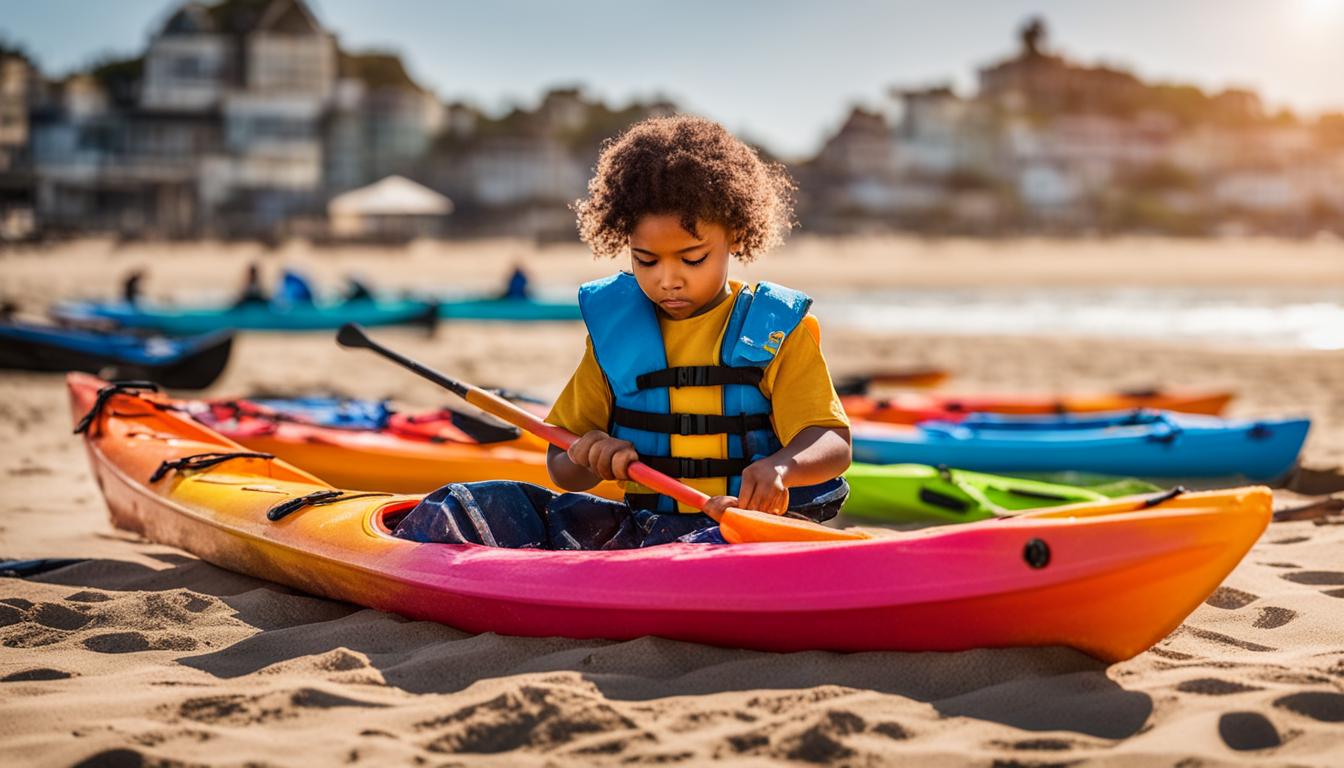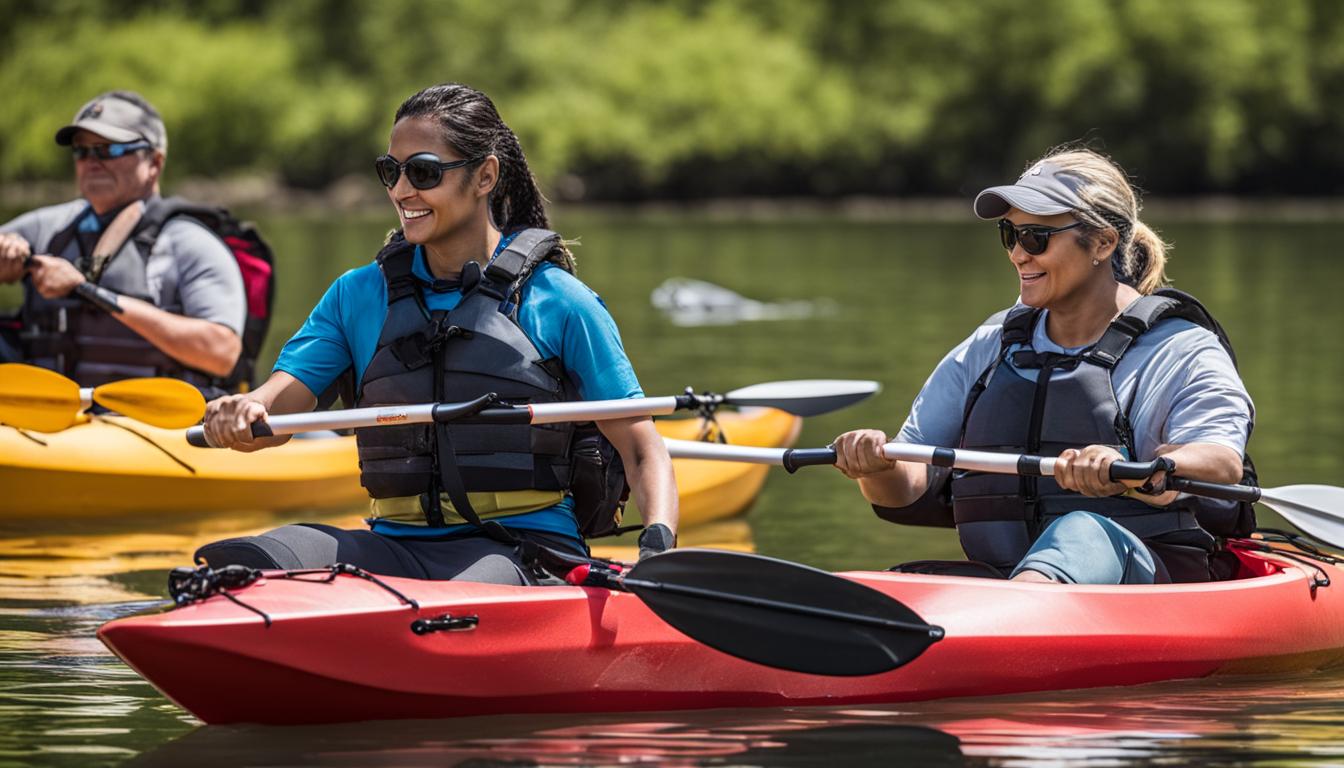When it comes to choosing the perfect kayaking course, evaluating its quality is key to ensuring an unforgettable paddling experience. With so many options available, it’s important to know what indicators to look for when assessing the effectiveness of a kayaking course.
The American Canoe Association (ACA) provides a comprehensive certification program for instructors, offering a reliable benchmark for evaluating the quality of kayaking courses. Their certification process consists of an Instructor Development Workshop (IDW) and an Instructor Certification Exam (ICE). The IDW focuses on teaching effective instruction techniques, while the ICE evaluates both paddling and teaching skills.
Certification levels range from Level 1 to Level 4, with instructors expected to uphold the ACA’s standards and promote positive paddling practices. To become certified, instructors must meet specific requirements, including maintaining ACA membership, First Aid and CPR training, and participation in the IDW and ICE. It’s important to note that passing the ICE or IDW does not automatically guarantee certification; candidates must meet the criteria for their desired level.
By understanding these key factors and evaluating them in a kayaking course, you can make an informed decision that will lead to an enriching and safe paddling experience.
Key Takeaways:
- Evaluating kayaking course quality is vital for a successful paddling experience.
- The ACA offers a certification program that sets standards for instructor qualifications and teaching effectiveness.
- Consider the qualifications and certifications of instructors, course curriculum, teaching methods, safety protocols, and participant reviews when assessing a kayaking course.
- Choosing a certified instructor ensures that they have met recognized industry standards and possess the necessary skills to teach paddle sports.
- Prioritize safety by selecting a course with clear protocols for emergencies and a commitment to participant well-being.
Key Indicators for Evaluating Kayaking Course Quality
When it comes to evaluating the quality of kayaking courses, there are several key indicators that can help you make an informed decision. By considering these factors, you can ensure that you choose a course that meets your needs and provides a positive learning experience.
1. Instructor Qualifications and Certifications
One of the most important factors to consider is the qualifications and certifications of the instructors. Look for instructors who are certified by recognized organizations such as the American Canoe Association (ACA) or the British Canoeing Union (BCU). These certifications indicate that the instructors have met certain standards and possess the necessary skills and knowledge to teach paddle sports effectively.
2. Course Curriculum and Lesson Plans
The course curriculum and lesson plans play a crucial role in determining the quality of a kayaking course. A well-structured curriculum should cover essential topics such as paddling techniques, safety guidelines, navigation, and environmental awareness. It should provide a comprehensive learning experience that equips participants with the necessary skills and knowledge to paddle safely and confidently.
3. Teaching Methods and Techniques
The teaching methods and techniques used in a kayaking course can greatly impact the learning experience. Look for courses that prioritize hands-on practice and individualized instruction. Effective teaching methods engage participants and provide them with practical opportunities to apply what they have learned. This approach fosters a deeper understanding of kayaking skills and promotes skill development in a supportive and engaging environment.
4. Safety and Rescue Protocols
Safety should be a top priority in any kayaking course. Evaluate the safety and rescue protocols in place, ensuring that the course has clear guidelines and procedures for handling emergencies. Look for courses that emphasize proper safety equipment usage, risk assessment, and emergency response. A course that prioritizes safety will not only provide a secure learning environment but also instill confidence in participants.
By considering these key indicators, you can assess the quality of a kayaking course and make an informed decision. Remember to also research and read reviews from previous participants to gain insights into their experiences and satisfaction levels. Evaluating these factors will help you choose a kayaking course that adheres to the best practices in the industry and ensures a rewarding and safe learning journey.

Conclusion
Evaluating the quality of kayaking courses is crucial in making an informed decision and ensuring a positive paddling experience. By considering the qualifications and certifications of instructors, the course curriculum and teaching methods, safety protocols, and reviews from previous participants, you can assess the quality of a kayaking course.
The American Canoe Association (ACA) offers certification programs that provide a benchmark for instructor qualifications and teaching standards. By choosing instructors certified by recognized organizations like the ACA, you can have confidence in their expertise and ability to teach paddle sports effectively.
In addition to instructor qualifications, it is important to evaluate the teaching methods used in the course. Look for courses that offer hands-on practice and individualized instruction, as these are often more effective and engaging. A well-structured course curriculum that covers essential topics such as paddling techniques, safety guidelines, navigation, and environmental awareness is also important.
Safety should always be a top priority when evaluating a kayaking course. Make sure the course has clear protocols in place for handling emergencies and ensuring the well-being of participants. Reading reviews and testimonials from previous participants can provide valuable insights into the overall quality and satisfaction level of the course.
By taking the time to evaluate these factors, you can choose a kayaking course that meets your needs and ensures a safe and enjoyable paddling experience.
FAQ
What is the process for ACA certification?
ACA certification consists of an Instructor Development Workshop (IDW) and an Instructor Certification Exam (ICE). The IDW focuses on teaching effective instruction, while the ICE evaluates paddling and teaching skills.
What are the different certification levels?
Certification levels range from Level 1 to Level 4, with each level indicating a higher level of proficiency and teaching ability.
What are the requirements to become an ACA-certified instructor?
Instructors must maintain ACA membership, have First Aid and CPR training, and participate in the IDW and ICE.
Does participation in the ICE guarantee certification?
No, participation in the ICE or IDW does not guarantee certification. Candidates must meet the criteria for their desired level.
What are the key indicators to evaluate the quality of kayaking courses?
Key indicators include the qualifications and certifications of instructors, the course curriculum and lesson plans, teaching methods and techniques, safety and rescue protocols, and course reputation and reviews.
Why is it important for instructors to be certified by recognized organizations?
Certification by recognized organizations such as the ACA or BCU indicates that instructors have met certain standards and have the necessary skills and knowledge to teach paddle sports.





